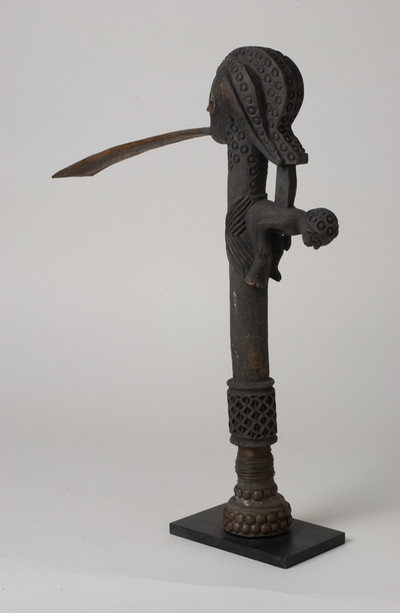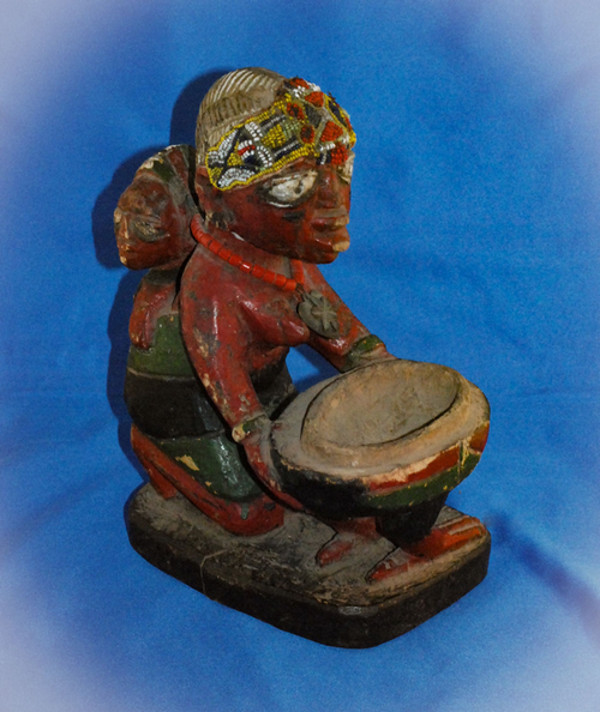(photo coming soon)
This painted wooden piece was probably made by the Egungun cult in the Yoruba tribe of Africa. These people have been known in South Western Nigeria, and parts of Dahomey and Togo. Evidence for its association with this cult include the descriptions of typical art produced by these people which match the descriptions of typical art produced by these people which match the description of this piece, including; relatively naturalistic style with rounded features and composed lips, sometimes grotesque and surrealistic (like the gouged out eye and the dripping paint that looks like blood), pronounced hair coiffure, ritualistic adornment (like the 6 spiky "medicine bottles" found attached to the piece's head), heavy, set on hollowed-out base.
Although it is described as a mask, this piece can not be worn in the conventional sense that it would directly cover the face. Instead, it may have been worn like a hat, with some sort of textile covering the wearer like a shroud (this has been observed of similar masks by the Yoruba tribe). Evidence of this can be found by examining the base of the sculpture, which had been hallowed out into a ruff bowl-shape (probably to facilitate the head of the wearer).
The masks are described as having special ceremonial purposes. They are supposed to represent actual ancestors, and are worn during ceremonial festivals like funerals. They may be made as caricatures of the recently deceased, or as past family members who would be encouraged to convey their wishes from the other world. Dancers wearing the masks are said to be in a trance so that they can receive messages from the dead, walking and talking like the deceased person that they are masquerading as.
If this piece is an Egungun mask, then minute details that seem confusing can be explained. For instance, this particular piece has a large hairpiece, which dips down to the left, and has a fictitious animal head attached to the hair coil. The extra head seems to be a goat, or a cross between a monkey and a rabbit, but it also could represent a strange lizard if the hair coil could be thought of as an extension of its body. Regardless of what it is, it does have either 2 sets of ears, or horns and small monkey-like ears, which is not unusual for an Egungun head. Egungun ancestors are often depicted as great warriors and hunters who must slay the witches of the forest during their many hunting trips. The witches are said to take the shape of various animals, and strange animal head is supposed to be the representation of one (or a few) of these animals. Further evidence that this mask is of one of these hunters is the direction of the hair coil itself, which dangles low to the left side of the piece, a hairstyle that is said to be reserved for such a hunter.
The six strange spikes that are attached to the piece (across the back of the head) can also be explained by the Egungun folklore. Magical potions are described as necessary for the fierce battle with forest witches, and these potions are stored in vials that are the same shape (and sometimes size) of the "bottles" that are found on the mask.
Even the missing eye and the tribal scars on the cheeks are consistent with the interpretation of a mighty hunter-warrior having fought fiercely and bravely (with witches). ("African Tribal Images", William Fagg, 1968; Yoruba).


